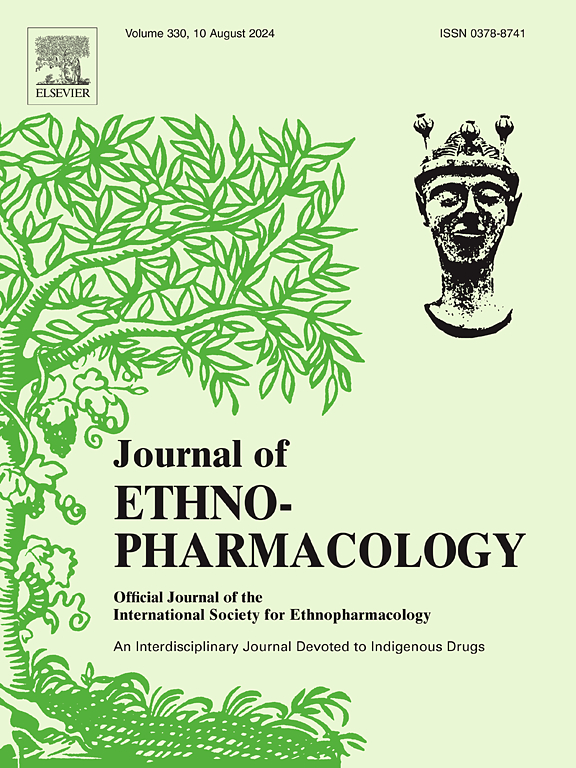In vivo and in vitro anti-inflammatory activity of the methanolic leaves extract of Gymnopodium floribundum Rolfe
IF 4.8
2区 医学
Q1 CHEMISTRY, MEDICINAL
引用次数: 0
Abstract
Ethnopharmacological relevance
Gymnopodium floribundum Rolfe, known locally as “Dzidzilche” or "Ts'its'ilche,” is a native species from Mexico and Central America. In Mayan communities, this plant is used to relieve inflammation and diverse respiratory diseases such as colds, catarrh, bronchitis, and asthma. Usually, a decoction of leaves or flowers is prepared and administered orally.
Aim
This research explores the anti-inflammatory effects of the methanol extract of Gymnopodium floribundum Rolfe leaves (MGF) using in vitro and in vivo animal models of inflammation.
Methods
MGF was characterized by GC-MS, and cytotoxicity was assessed using hemolysis and MTT assays. The antiphlogistic effect in vitro was measuring the release of cytokines, hydrogen peroxide, and nitric oxide in macrophages stimulated with LPS. Additionally, anti- and pro-inflammatory cytokines, prostaglandins, and leukotrienes in serum were quantified in carrageenan-induced mouse paw edema. Finally, 1-fluoro-2,4-dinitrobenzene (DNFB)-induced delayed-type hypersensitivity and TPA-induced ear edema models were analyzed.
Results
Compounds found in MGF, such as D-pinitol and protocatechuic (3,4-dihydroxybenzoic) acid, are reported to exert anti-inflammatory effects. MGF showed no hemolytic or cytotoxic effects. Nevertheless, it displayed in vitro anti-inflammatory activity by decreasing the release of IL-6, IL-1β, TNF-α, hydrogen peroxide, and nitric oxide levels; on the other hand, it increased IL-10 production. Furthermore, the MGF significantly reduced inflammation in mouse models and reduced the release of leukotrienes, prostaglandins, and pro-inflammatory cytokines.
Conclusion
Gymnopodium floribundum Rolfe exhibits anti-inflammatory activity by suppressing pro-inflammatory mediators, altering cell migration mechanisms, and raising IL-10 production.

求助全文
约1分钟内获得全文
求助全文
来源期刊

Journal of ethnopharmacology
医学-全科医学与补充医学
CiteScore
10.30
自引率
5.60%
发文量
967
审稿时长
77 days
期刊介绍:
The Journal of Ethnopharmacology is dedicated to the exchange of information and understandings about people''s use of plants, fungi, animals, microorganisms and minerals and their biological and pharmacological effects based on the principles established through international conventions. Early people confronted with illness and disease, discovered a wealth of useful therapeutic agents in the plant and animal kingdoms. The empirical knowledge of these medicinal substances and their toxic potential was passed on by oral tradition and sometimes recorded in herbals and other texts on materia medica. Many valuable drugs of today (e.g., atropine, ephedrine, tubocurarine, digoxin, reserpine) came into use through the study of indigenous remedies. Chemists continue to use plant-derived drugs (e.g., morphine, taxol, physostigmine, quinidine, emetine) as prototypes in their attempts to develop more effective and less toxic medicinals.
 求助内容:
求助内容: 应助结果提醒方式:
应助结果提醒方式:


